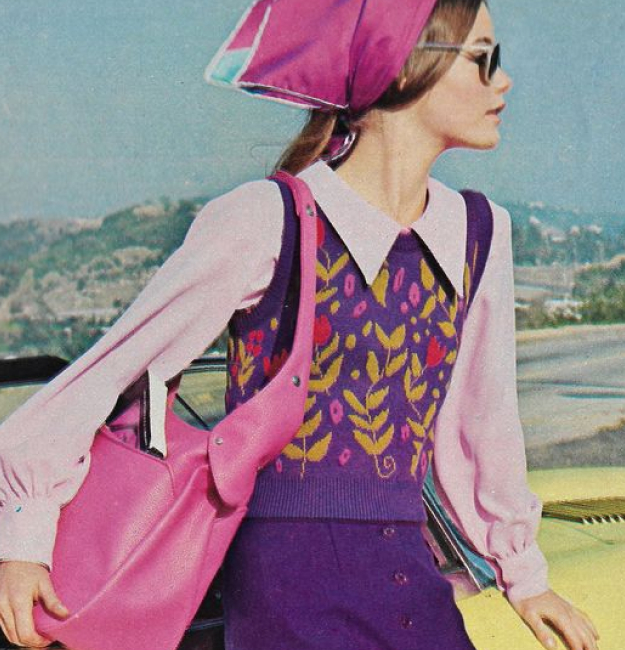Navigating the Realm of Timeless Elegance: Understanding Vintage Clothing

Introduction:
In the ever-evolving world of fashion, where trends rise and fall like the ebb and flow of tides, the term “vintage clothing” holds a special place. More than just garments from the past, vintage clothing embodies a unique blend of nostalgia, style, and historical significance. This extensive exploration delves into the rich tapestry of vintage clothing, unraveling its definition, the distinct eras it encapsulates, the allure of collecting, and its enduring impact on contemporary fashion.
Defining Vintage Clothing:
- The Essence of Vintage: The term “vintage” originates from the Latin word “vindemia,” meaning the harvest of grapes. In the context of clothing, vintage refers to garments from a specific era that possess a timeless appeal and enduring quality.
- Time Period Classification: While the term is often used broadly, true vintage clothing typically hails from specific historical periods. Conventionally, clothing from the 1920s to the 1980s is considered vintage, with items from the 1990s onward classified as “retro.”
Distinct Eras of Vintage Clothing:
- The Roaring Twenties: The 1920s marked an era of liberation, reflected in flapper dresses, drop-waist silhouettes, and Art Deco embellishments. Vintage pieces from this period exude a sense of Jazz Age exuberance.
- The Glamorous Thirties: The 1930s brought forth bias-cut gowns, tailored suits, and the opulence of Old Hollywood. Vintage clothing from this era often features elegant lines, intricate detailing, and a nod to the escapism of the time.
- Wartime Utility in the Forties: World War II influenced fashion in the 1940s, giving rise to utility clothing and practical designs. Vintage pieces from this period showcase resilience and a fusion of style and practicality.
- The New Look of the Fifties: Christian Dior’s New Look dominated the 1950s, featuring cinched waists, full skirts, and an emphasis on femininity. Vintage clothing from the ’50s embodies post-war optimism and a return to glamour.
- Swinging Sixties Revolution: The 1960s witnessed a cultural revolution, reflected in mini skirts, psychedelic prints, and mod aesthetics. Vintage pieces from this era capture the spirit of change and experimentation.
- The Bohemian Seventies: The 1970s embraced bohemian styles, flowing silhouettes, and disco glam. Vintage clothing from this period often features earthy tones, bold patterns, and a relaxed, free-spirited vibe.
- The Decadent Eighties: The 1980s brought forth power suits, bold colors, and excess. Vintage pieces from this era showcase shoulder pads, neon hues, and the influence of pop culture.
The Allure of Collecting Vintage Clothing:
- Unique and One-of-a-Kind: Vintage clothing offers a sense of exclusivity, with each piece representing a bygone era. The uniqueness of vintage garments appeals to collectors seeking items that stand apart from mass-produced, contemporary fashion.
- Quality Craftsmanship: Vintage clothing often boasts superior craftsmanship and attention to detail. From hand-stitched seams to intricate embroidery, these garments reflect an era when quality was prioritized over quantity.
- Historical and Cultural Significance: Each piece of vintage clothing carries a narrative, reflecting the cultural, social, and political milieu of its time. Collecting vintage becomes a journey through history, with garments serving as tangible artifacts.
- Sustainability and Ethical Fashion: In an era of fast fashion, vintage clothing aligns with sustainable and ethical fashion practices. Choosing pre-loved garments reduces environmental impact and promotes a circular fashion economy.
- Personal Style Statements: Vintage pieces allow individuals to curate a wardrobe that stands out, expressing their unique style sensibilities. Vintage clothing is a canvas for personal expression and a departure from mainstream trends.
Impact on Contemporary Fashion:
- Fashion Revival and Inspiration: Designers frequently draw inspiration from vintage aesthetics, leading to periodic revivals of specific eras. Vintage clothing serves as a wellspring of ideas for contemporary fashion, influencing runway trends and street style.
- Celebrity Endorsement: Celebrities often embrace vintage fashion, elevating its popularity and reinforcing its timeless allure. Red carpet events and high-profile appearances featuring vintage gowns contribute to the ongoing fascination with classic styles.
- Vintage Boutiques and Online Platforms: The rise of vintage boutiques and online platforms has made vintage clothing accessible to a broader audience. Curated collections, specialized shops, and digital marketplaces have become hubs for enthusiasts seeking unique pieces.
- DIY and Upcycling Trends: The DIY (Do It Yourself) and upcycling movements have gained momentum, encouraging individuals to repurpose and rejuvenate vintage pieces. This trend aligns with sustainable practices and adds a contemporary touch to classic garments.
Conclusion:
Vintage clothing, with its timeless charm and historical significance, remains a captivating facet of the fashion landscape. From the flapper dresses of the 1920s to the power suits of the 1980s, each era encapsulates a distinct narrative and style, contributing to the enduring allure of vintage fashion. As collectors, designers, and fashion enthusiasts continue to celebrate the artistry and craftsmanship of bygone eras, vintage clothing remains a testament to the enduring elegance of fashion that transcends the constraints of time.




